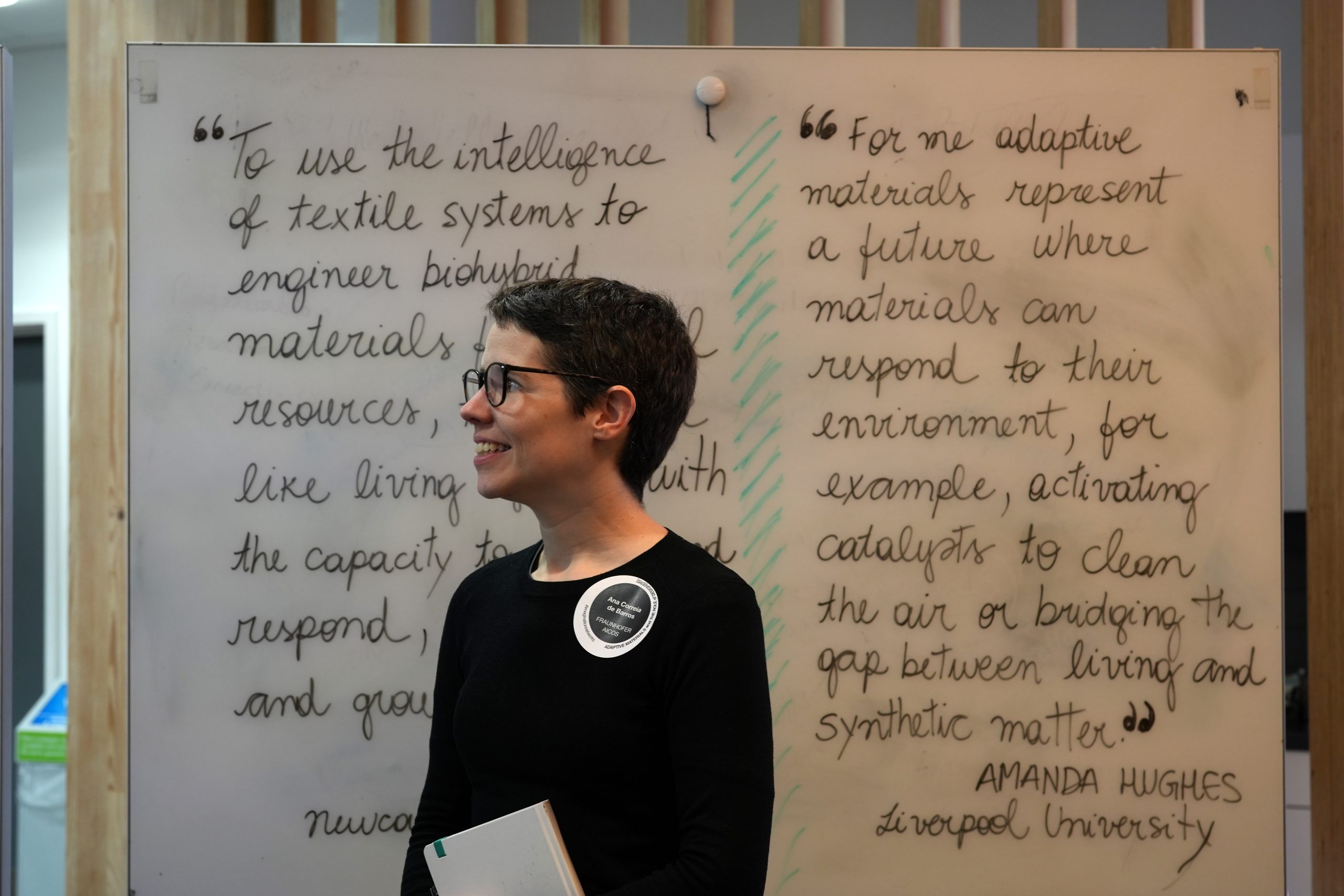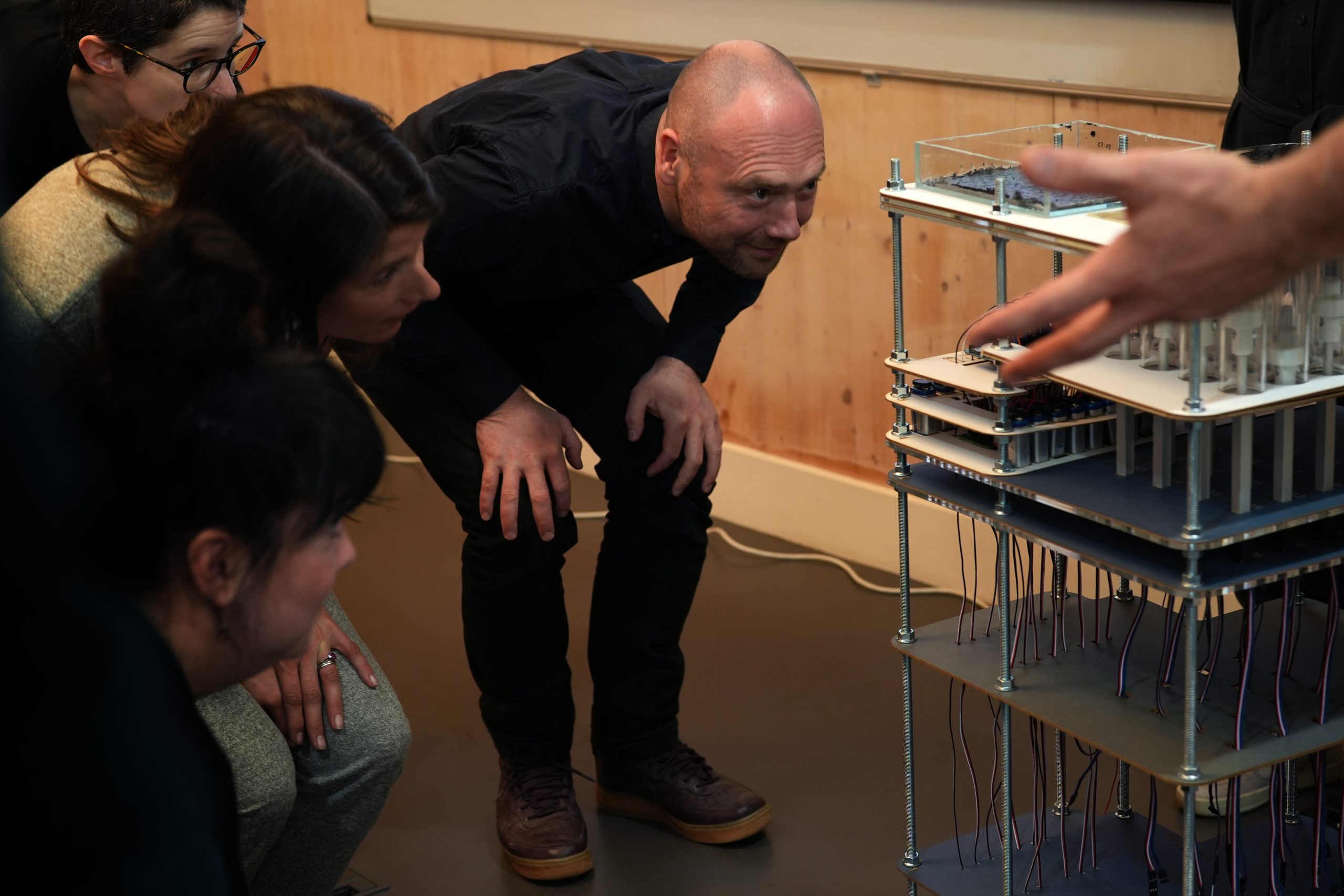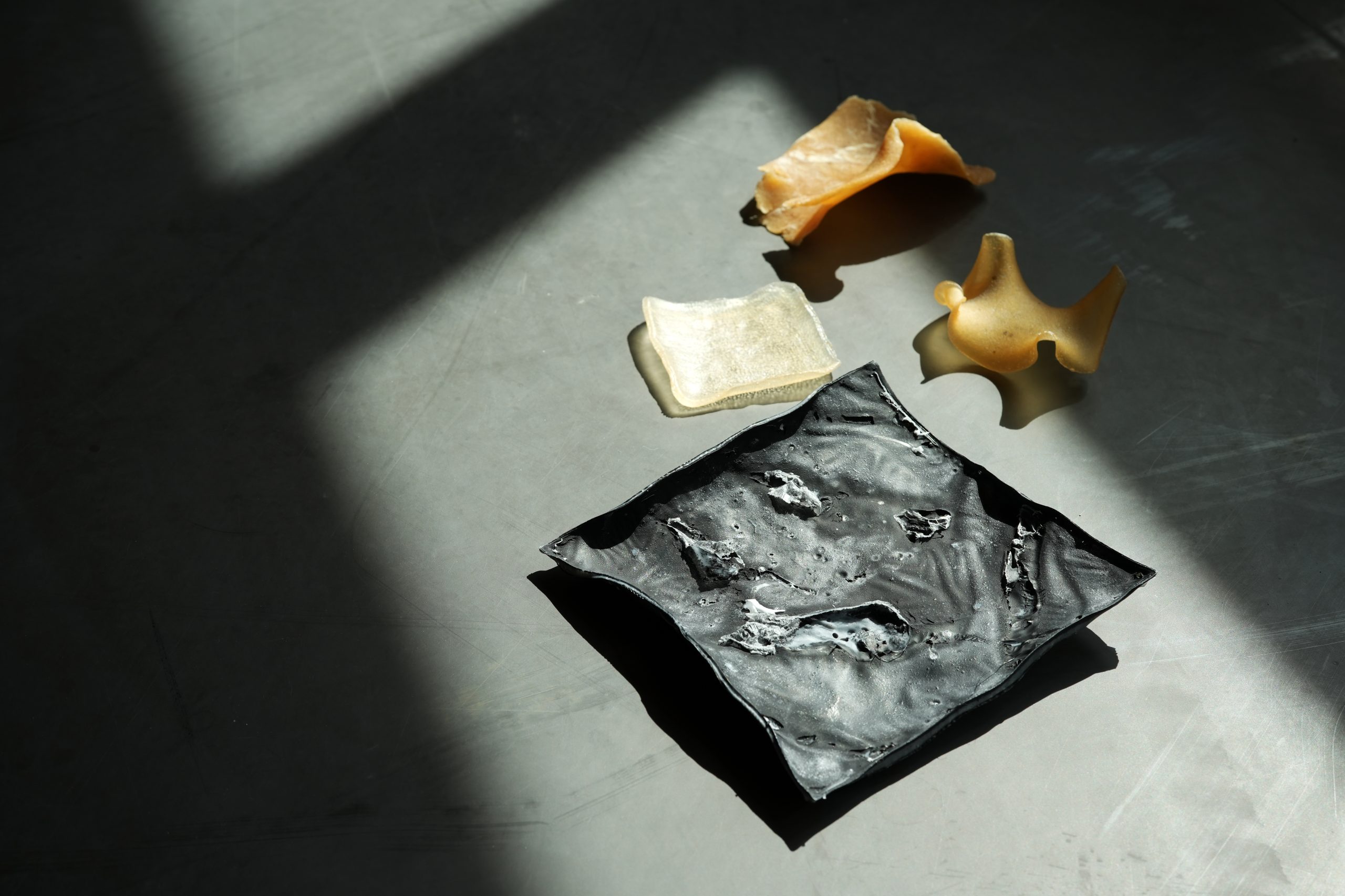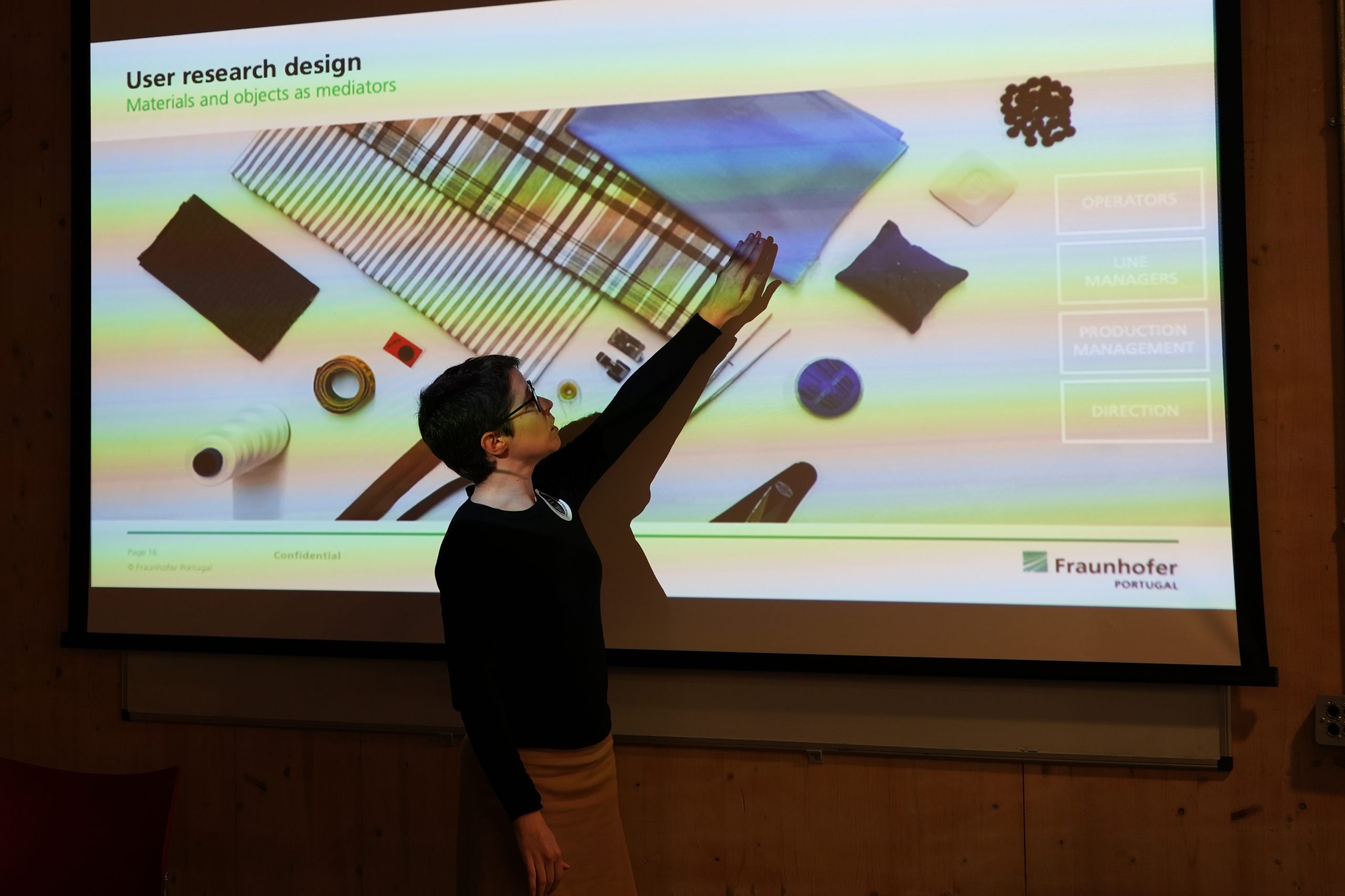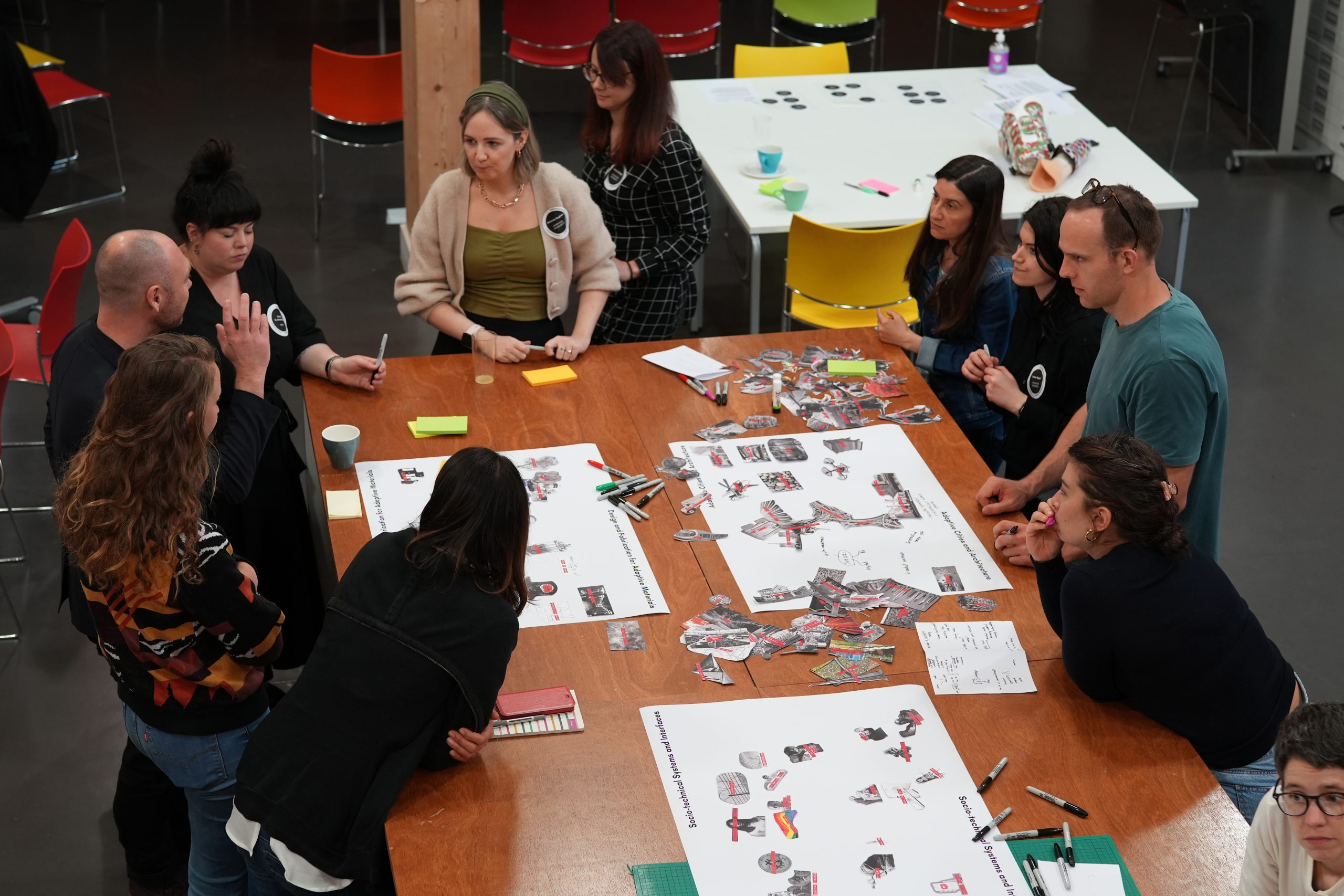The adaptive materials and the role of design[ers] 2-day workshop has brought together experts from academia, the public health sector, and industry in the UK and across Europe. The workshop explored visions and challenges for the future of adaptive materials and the role of design[ers] through a series of talks, conversations, and visual representations. The event encompassed cutting-edge research and work in the areas of:
- Computational design (Mette Ramsgaard Thomsen and Paul Nicholas, Centre for Information Technology and Architecture [CITA], Copenhagen, Denmark),
- Bio-materials (Martyn Dade-Robertson and team, Hub for Biotechnology in the Built Environment [HBBE], Newcastle University and Northumbria University),
- Responsive textile materials (Jane Scott, University of Leeds),
- Chemistry and solar cells (Amanda Hughes, Liverpool University)
- Synthetic chemistry (Amanda Jarvis, University of Edinburgh)
- Stimuli-responsive materials (John Hardy and Emel Pelit, Lancaster University)
- Inclusive design and assistive products in healthcare (Fraunhofer Portugal AICOS),
- Prosthetics (Fergus Jepson and Victoria Bateman, National Health System, Preston, UK)
On the first day, Adam Blaney, Dilan Ozkan and Mariana Braga from Lancaster University presented the novel work they have been conducting on adaptive materials. Martyn Dade-Robertson introduced the exciting research on bio-materials that present potential to grow a building. Ana Correia de Barros talked about the relations, implications and meaning of materials for workers in the textile industry.
On day two, Mette Ramsgaard Thomsen and Paul Nicholas shared their vibrant work on harvested materials and ‘microbial’ light, and highlighted their interest in how computation changes the way we think design. Fergus Jepson and Vicky showed their insightful experience in prosthetics, users’ adaptation to them and their demands.
The discussions raised important questions that need to be considered for the future of adaptive materials in the areas of urbanism, architecture and health, involving maintenance and co-design of buildings, visualisation of microbes’ development in real-time, as well as the uncertainty and control of microbes taking into account planetary health. Topics such as construction systems and their longevity, the life span, cycles of repair and conditions of materials should be completely rethought in the context of adaptive materials. Questions such as: “What does it mean to design for material life cycles?” and involving the human interaction with changeable structures have stressed the importance of designing for people’s agency. The latter suggests that humans need to be even more part of these adaptive systems rather than passive ‘consumers’ of stuff. Furthermore, adaptive materials can revolutionise in the long term the way of designing prosthetics, offering meaningful opportunities for these challenging bespoke products. All in all, the discussions highlighted that design[ers] will require localised and grassroots-oriented approaches as well as new ways of going through materials’ cycles for a non-linear world that still poses challenges to scale.


